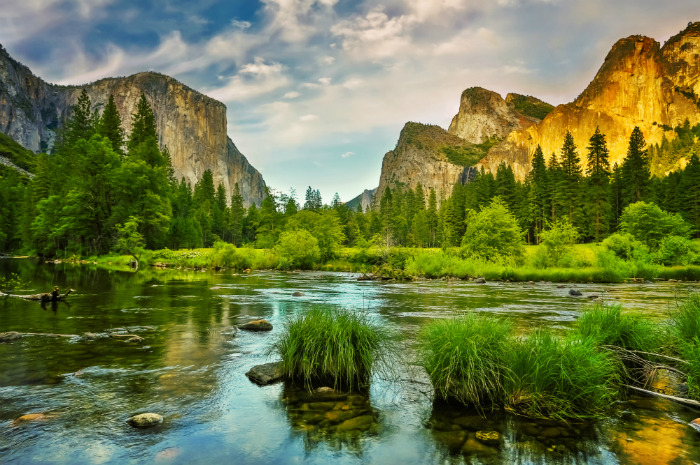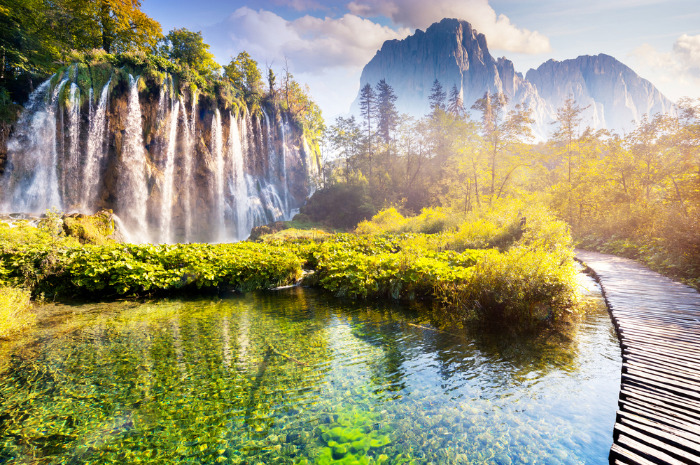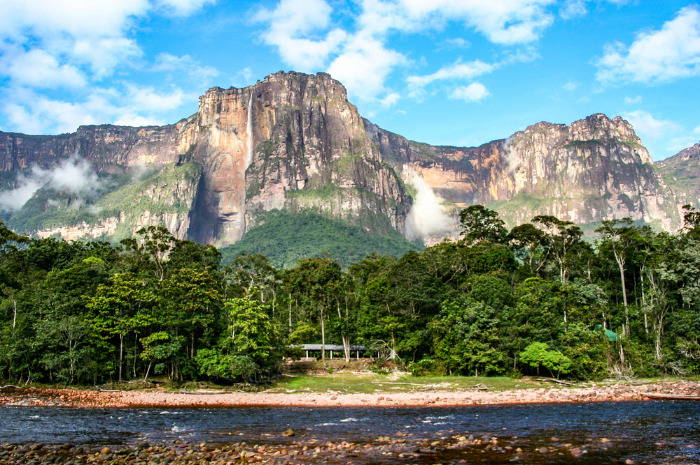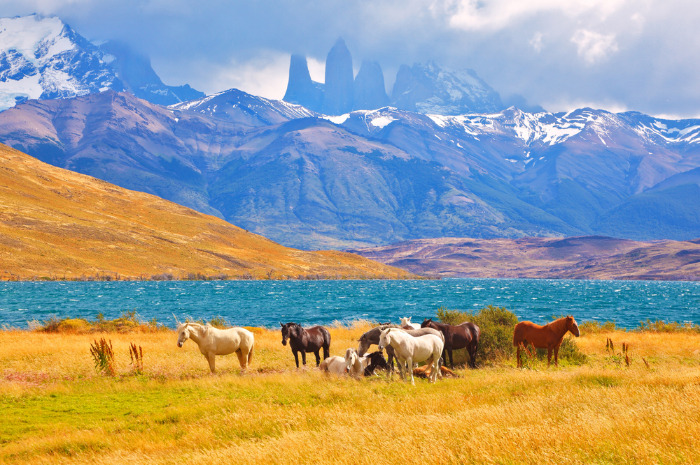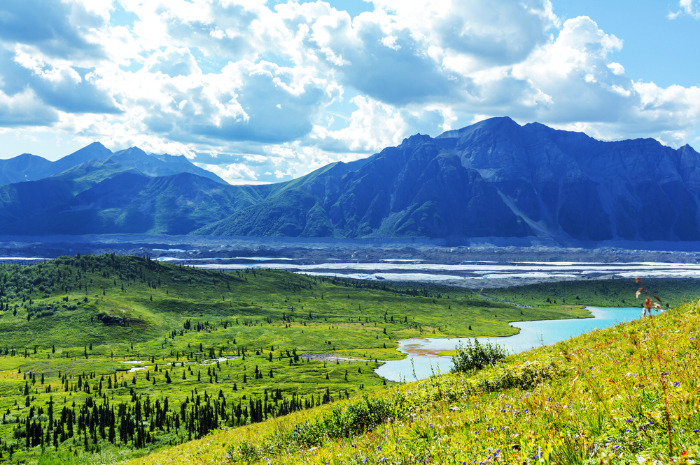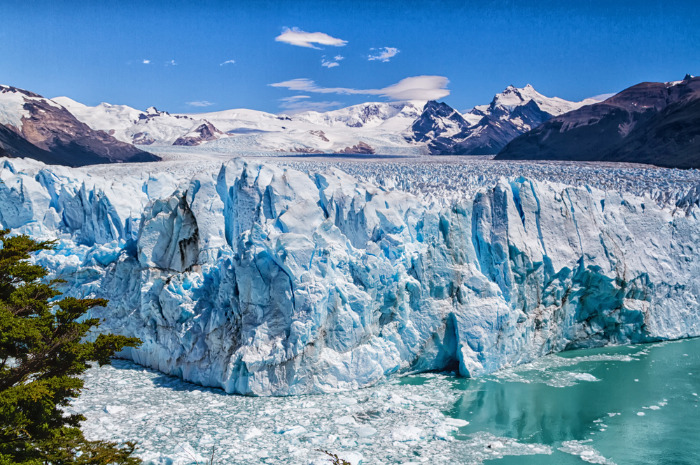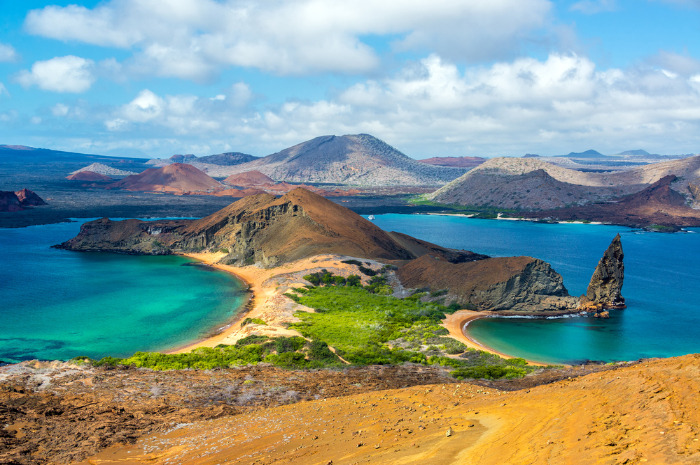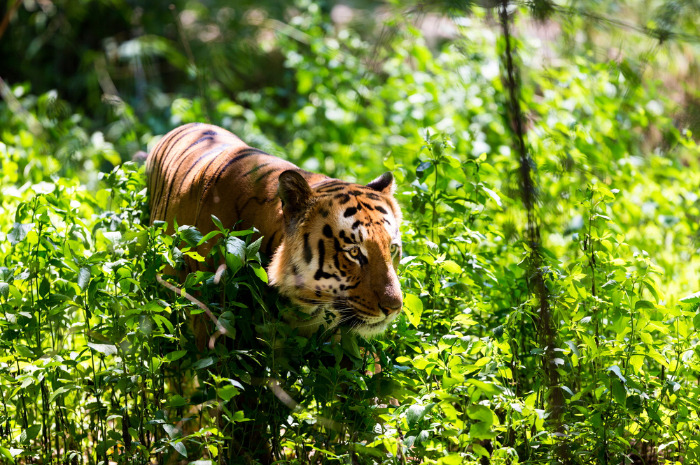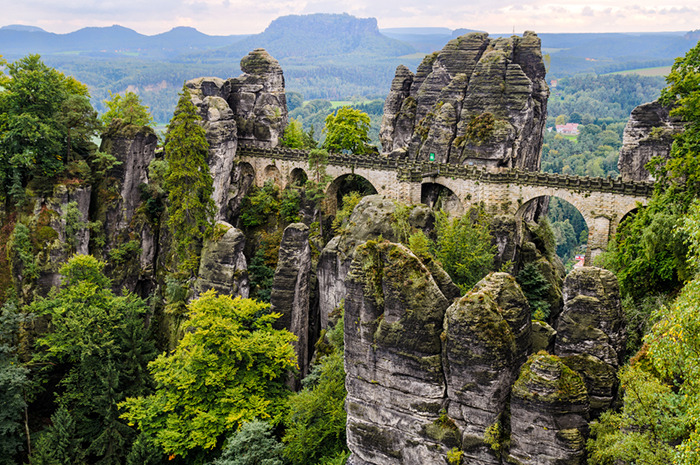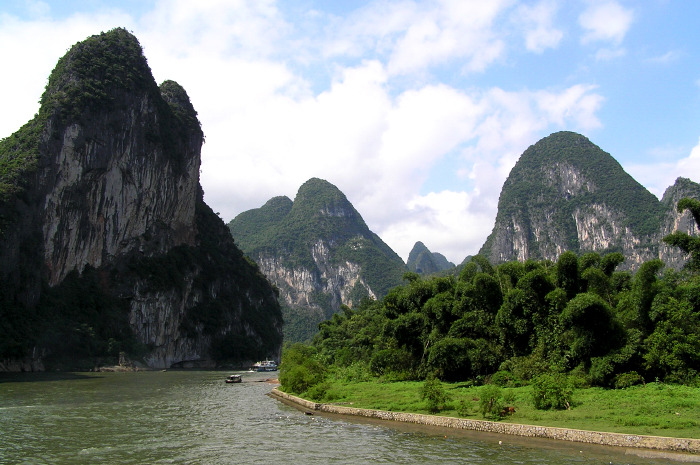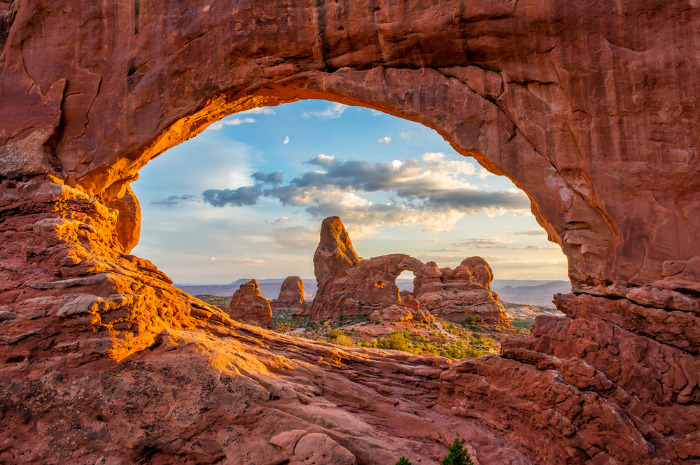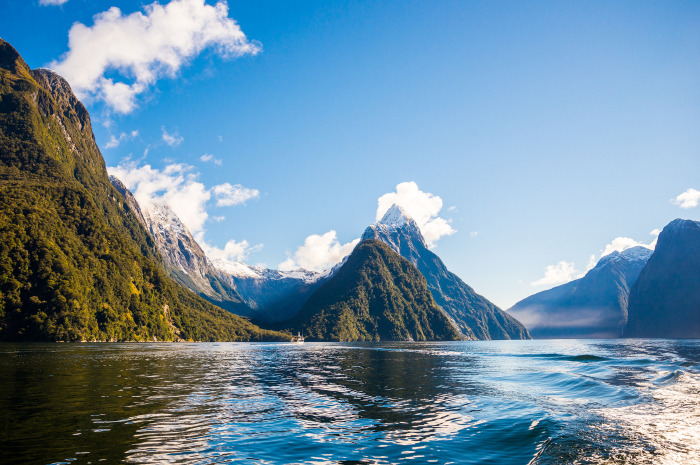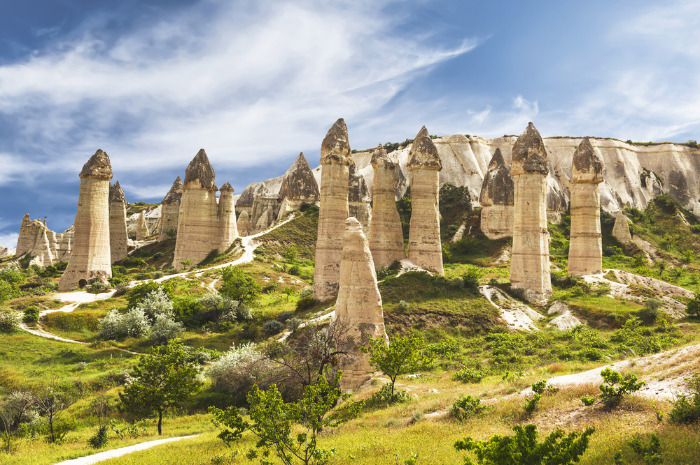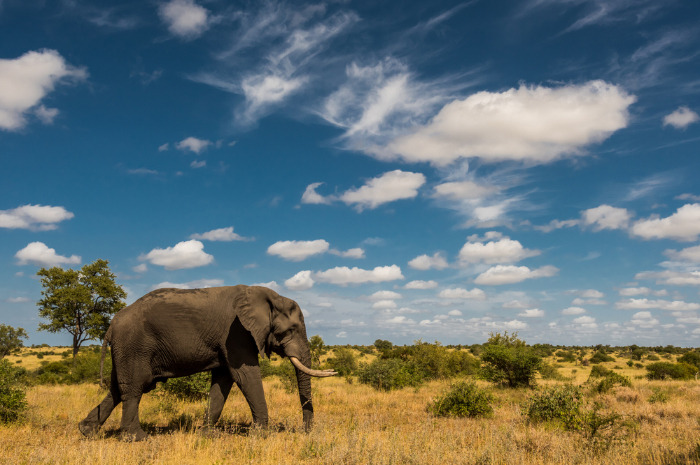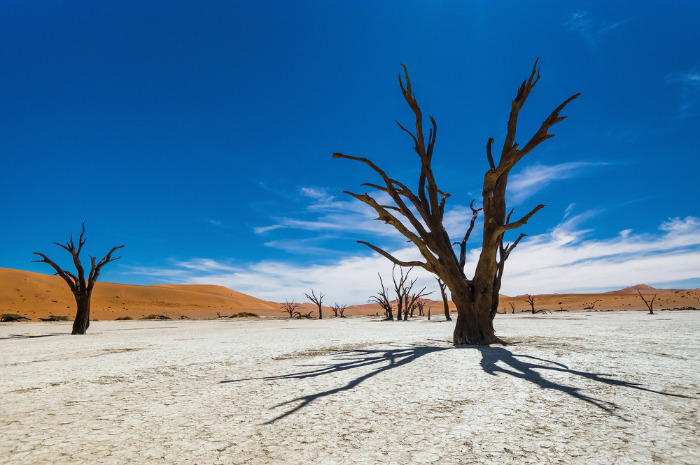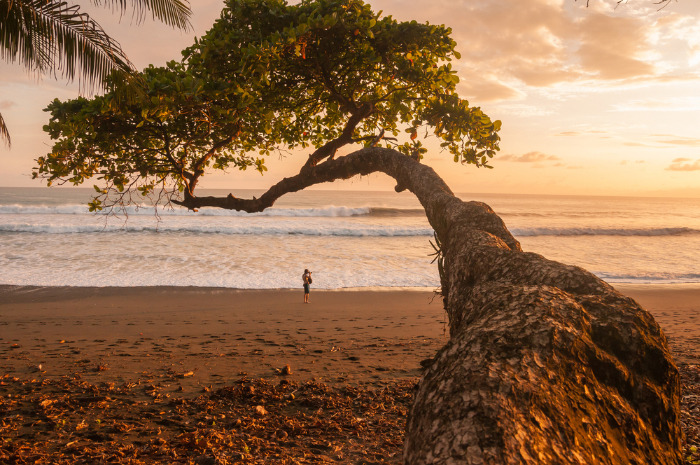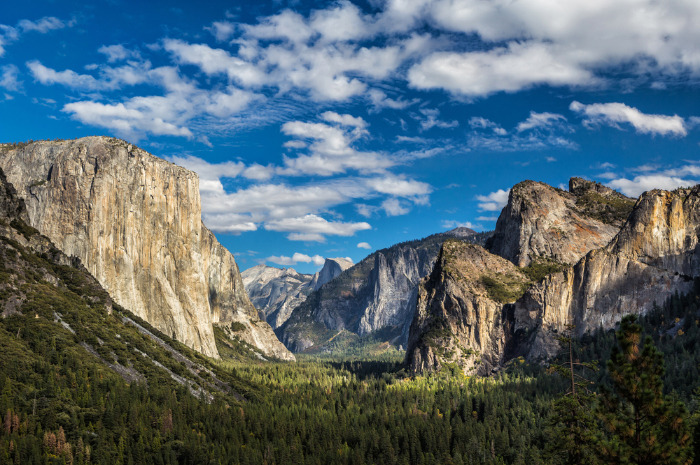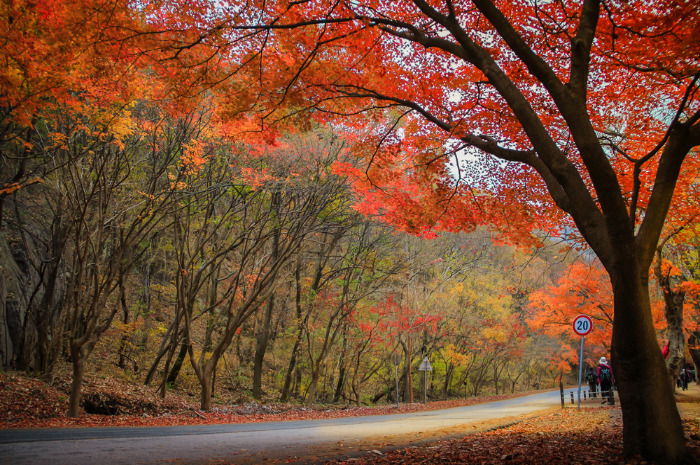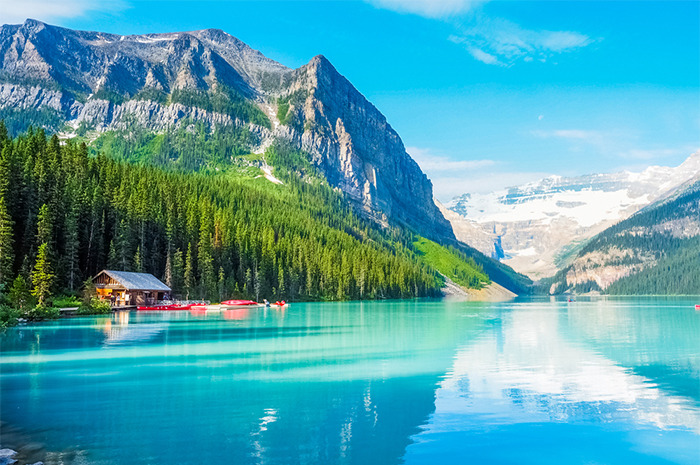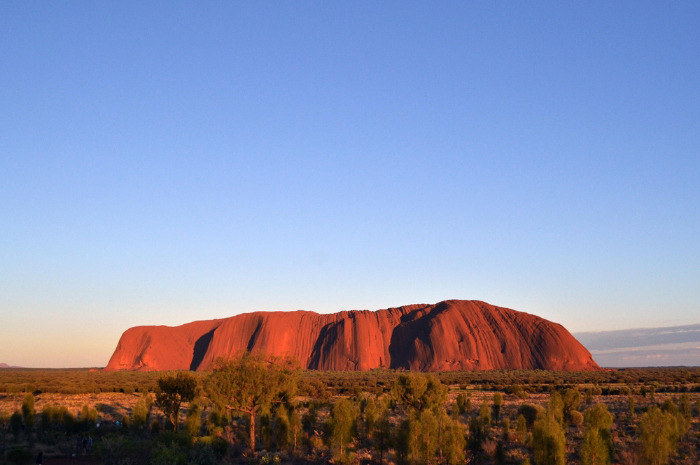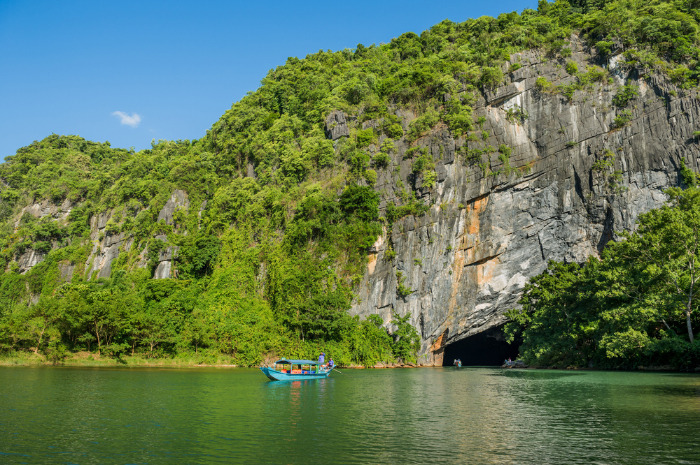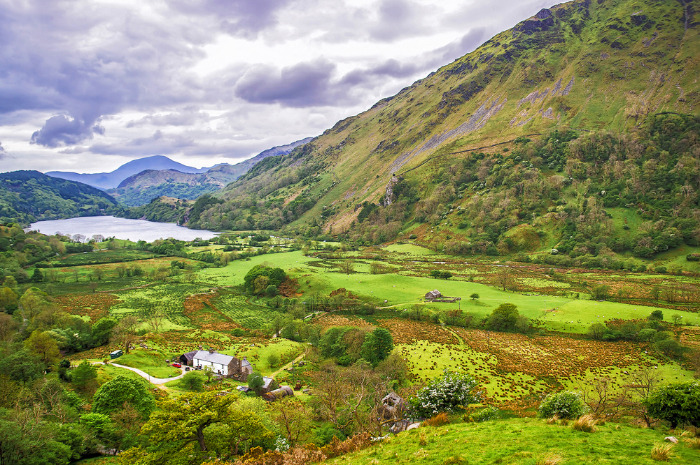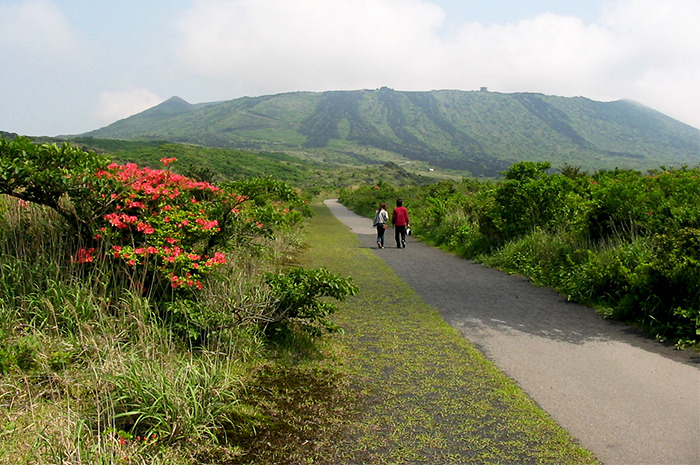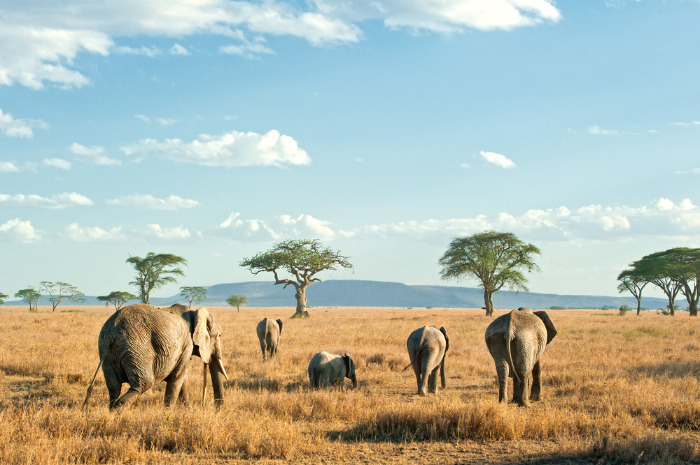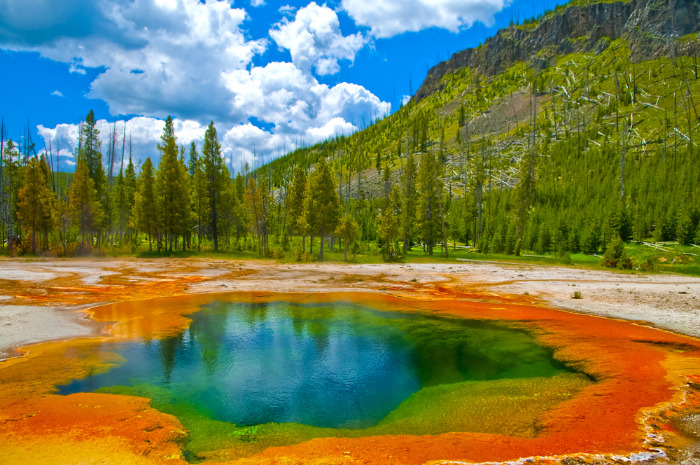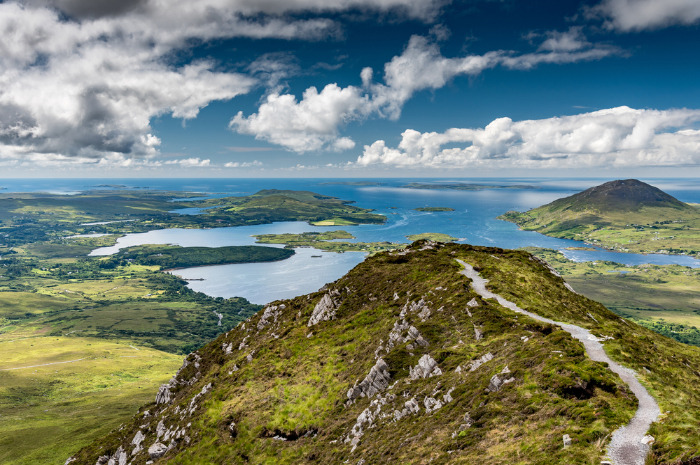The 25 Most Beautiful National Parks In The World
Whatever you're into – exploring caves, week-long safaris, hiking, fishing, or simple sightseeing – you will find it in a nation.
Plitvice Lakes, Croatia
This national park is more like a scene from a fairy tale than an actual place on earth, but the 16 crystal clear lakes, breathtaking waterfalls and vaulted caves are not only real—they're natural formations. Water rich with minerals winds its way down waterfalls and along rocks, continuously changing the landscape as diverse wildlife (bears, wolves, rare birds and butterflies) live in the vast forest that surrounds the lakes.
Canaima, Venezuela
Canaima National Park is spread over 3 million hectares (about the same size as Belgium), along the border between Guyana and Brazil. Much of the park is covered by tepui, according to Hike Venezuela. The mountains, cliffs and waterfalls of Canaima form a spectacular and unique landscape. The gorgeous park was recognized as a UNESCO World Heritage Site in 1994.
Torres del Paine, Chile
It is popular among backpackers and adventure enthusiasts. Enjoy picturesque views of lakes, ancient forests, rivers, mountains and glaciers. The breathtaking landscapes make for some of the most scenic trekking routes in the world. This beautiful national park offers some of the most spectacular panoramas in the world. Capture views of incredible waterfalls, go hiking and relax by Lago Pehoe. The park attracts roughly 150,000 visitors to its remote wilderness each year.
Wrangell - St Elias, Alaska
Larger than the country of Switzerland, Wrangell–St. Elias is the country's biggest national park. The Chugach, Wrangell, and St. Elias mountain ranges converge in what is known as the "mountain kingdom of North America," encompassing 13.2 million acres. If you have a week or more to spare, you can hire an air taxi to drop you off in the wilderness where you will have incredible opportunities to paddle, ski, camp and hike without seeing anyone else for days or weeks on end.
Los Glaciares, Argentina
This park is known for its exceptional natural beauty, rugged, towering mountains and glacial lakes. The main attraction is the Upsala. It is surrounded by forests and the spectacular Lake Argentino. Blame global warming for the melting of this glacier; it has been receding since about 1999. Icebergs are continuing to fall and fill the water. Make sure you take a tour to this glacier soon before the ice mass retreats and continues to thin.
Galapagos, Ecuador
The Galapagos Islands are home to some of the most unique wildlife in the world. It consists of 13 major islands, five of which are inhabited. The park offers an incredible mix of tropical and polar species as well as volcanic rock landscapes. The Galapagos consists of 13 major islands, five of which are inhabited. Each of them has their own unique atmosphere and wildlife viewing opportunities. The islands are extremely threatened by tourism, pollution and the rise in sea water temperature.
Jim Corbett, India
Visitors can book a Jeep Safari or Canter Safari in this incredible national park. See tons of tigers, including the Royal Bengal Tiger from up close and trek on the foothills of the Almora ranges. "Giving shelter to about 600 species of birds, 500 species of flora and numerous varieties of wild animals, Corbett is the best protected and managed national parks in India," according to the park's homepage.
Saxon Switzerland, Germany
This is the birthplace of free climbing. Established in 1990 and encompassing 36 square miles, the park is known for its free climbing opportunities and for its wildly eroded landscape of Elbe sandstone formations, created as a seafloor during the Cretaceous period, according to National Geographic. For the best experience, it is advised to take a rowboat or ride a historic paddle steamer on the water.
Guilin and Lijiang River, China
This national park is known for its scenic area. It covers the 50-mile stretch of the river between Guilin and Yangshuo, bounded by classic sheer karst hills, according to China Highlights. The park's top features include the Nine Horse Fresco Hill, Yellow Cloth Shoal, 20-Yuan-Bill Hill, and the Xingping Ancient Town. The most popular activities are cruising, hiking, and hill climbing.
Arches, Utah
Arches National Park is full of fun and adventurous things to do. Go backpacking, bike around the many tough trails, try camping, canyoneering, hiking, horseback riding, and experience one of the Holcombe's favorite sports – rock climbing. See park's incredible famous arches, landscapes, and go on an auto tour. Climbers come for the chance to scale one of the park's 2,000 natural sandstone arches (Note: Climbing on any arch or natural bridge named on the United States Geological Survey is now prohibited by law). Delicate Arch is the area's most famous feature.
Fiordland, New Zealand
This national park was established in 1952. It is comprised of mountains, lakes, rainforests and incredible ice-carved fiords. Experience the variety of habitats – flora and fauna, birds and fish, just to name a few. Soak up its beautiful scenery from a mountain top and embark on one of the three world-class Great Walks tracks – Kepler Track, Routeburn Track and Milford Track.
Goreme, Turkey
The Goreme National Park was added to the UNESCO World Heritage List in 1985. It is located in the volcanic zone of Hasan Mountain and Erciyes Mountain. The incredible rock formations make it one of the world's most spectacular cave-dwelling developments. In a spectacular landscape, the valley was entirely sculpted by erosion, according to UNESCO. Dwellings and underground towns seen there date back as early as the 4th century.
Kruger, South Africa
Kruger National Park is undoubtedly one of the best places to see wildlife in all of Africa. The park that spans two million hectares (or 7,523 square miles) is home to an astounding array of wildlife—49 species of fish, 507 species of birds and 147 species of mammals. It also offers visitors a glimpse at the "Big Five"—elephants, rhinos, buffaloes, leopards and lions. Isolated and away from pollution and urban artificial lights, the park is perfect for stargazing.
Namib-Naukluft, Namibia
Although exceptionally arid, Namib Naukluft Park–home to one of the world's oldest and largest deserts–is still teeming with life. The area is home to many species including udu, gemsbok, klipspringer, duiker, steenbok, leopard, baboon, black-backed jackal, bat-eared fox, African wild cat, caracal and aardwolf. The park's massive sand dunes, formed by winds that blow in from the Atlantic Ocean, are one of its defining characteristics. With some reaching more than 1,000 feet high, these dunes are some of the tallest in the world.
Corcovado National Pak, Costa Rica
Corcovado National Park is one of the world's best spots for trekking, hiking and camping. This tropical rainforest is home to rare wildlife and has been called "the most biologically intense place on Earth," by National Geographic. Hike through the spectacular rainforest and mangrove swamp to see some of the most incredible wildlife in all of Costa Rica. Make sure you venture out to Corcovado's incredible waterfalls. Stop by the La Llorona Waterfall; it is a 100 foot drop and has swimming holes strewn throughout.
Yosemite, California
With over 20 waterfalls, challenging day hikes and family friendly trails, Yosemite National Park is the perfect park to embark on solo or with your loved ones. Visit one of the world's tallest falls, Yosemite Falls. Go rock climbing, swim in their outdoor pools, visit Glacier Point and take a full-moon bike ride. In the winter, Yosemite is known for their downhill and cross-country skiing.
Naejangsan, South Korea
Naejangsan is the best mountain in the country for viewing fall's crimson leaves, according to Visit Korea The name Naejang means "many secrets" in the mountain. There are stunning waterfalls and temples that attract most tourists. There are also about 760 kinds of local plants, designated Natural Monuments, and various wild animals living inside Mt. Naejangsan Park. Azaleas and cherry blossoms bloom in the spring.
Banff, Canada
Established in 1885, Banff National Park is Canada's first and the world's third. It all started when construction workers stumbled across a cave containing hot springs on the eastern slopes of Alberta's Rocky Mountains. Visiting the park in the winter is like being in a small Swiss skiing town. Hiking, biking and rock climbing are popular during other months and people take advantage of the incredibly diverse rugged terrain. The ancient monoliths range from 45 to 120 million years old, with the highest in the park, Mount Forbes, coming in at 11,850 feet, according to National Geographic.
Uluru-Kata Tjuta, Australia
The park features spectacular geological formations that dominate the vast red sandy plain of central Australia. Uluru, an immense monolith, and Kata Tjuta, the rock domes located west of Uluru, form part of the traditional belief system of one of the oldest human societies in the world, according to UNESCO. The spectacular red rocks and domes are millions upon millions of years old.
Phong Nha-Ke Bang, Vietnam
The gorgeous UNESCO World Heritage Site is the result of earth crust development 464 million years ago. It's the oldest major karst formation in Asia, according to Vietnam Guide. Phong Nha-Ke Bang Park features more than 1,240 square miles of limestone zone and an impressive grotto and cave system with a total length of 44 miles. The park is home to the Hang Son Doong Cave, the world's largest cave. Its biggest chamber is over 3 miles in length.
Snowdonia, Wales
This is the most popular national park in Wales, with more than 6 million visitors every year. The area boasts the highest mountain (Snowdon) in England and Wales, and the largest natural lake in the country (Llyn Tegid). The terrain includes rugged mountain peaks, long sandy beaches, and crystal clear lakes and rivers. If you're up for the challenge, try one of the six footpaths up Snowdon, where you'll summit at 3,559 feet.
Fuji-Hakone-Izu, Japan
Fuji-Hakone-Izu National Park includes a volcanic area that features Mt. Fuji, the symbol of Japan. It also includes the Izu Peninsula and Izu Islands, which extend into the Pacific Ocean. Mt. Fuji as been designated as world heritage, and has influenced the sensibilities, arts, and crafts of the Japanese people since ancient times. The surrounding beautiful natural environment and quality hot springs are also a major attraction.
Serengeti, Tanzania
This is Tanzania's oldest national park and one of the most beautiful mind-blowing escapes you should add to your bucket list. It's famous for its annual wildebeest migration. It's also one of the few places in Africa where the amount of lions is not declining. The best time to see them is between December and March. Take a safari style tour to view the lions. The park and Mt. Kilimanjaro make Tanzania one of the most visited countries in Africa.
Yellowstone, Wyoming
This is one of the most visited national parks in the U.S. year after year. The 3,500 miles stretching from Wyoming to Montana and Idaho that make up Yellowstone, the very first national park established in the world, are magnificent. The park was founded to preserve the magnificent geysers and other geothermal wonders abundant in the area. Yellowstone is also an amazing destination for active adventures. You'll explore volcano's power, hot springs, geysers, mountains, forests, and lakes.
Connemara, Ireland
Some locals say Connemara shows "the real beauty of Ireland." The park encircles a kaleidoscope of the region's most spectacular scenery in a 4,942-acre setting, according to Galway Tourism. With very little man-made development, it is a blend of mountains, bogs, heaths, grasslands, rivers, waterfalls, and nature trails. Connemara ponies run wild and assorted wildlife roam the gentle landscape.
